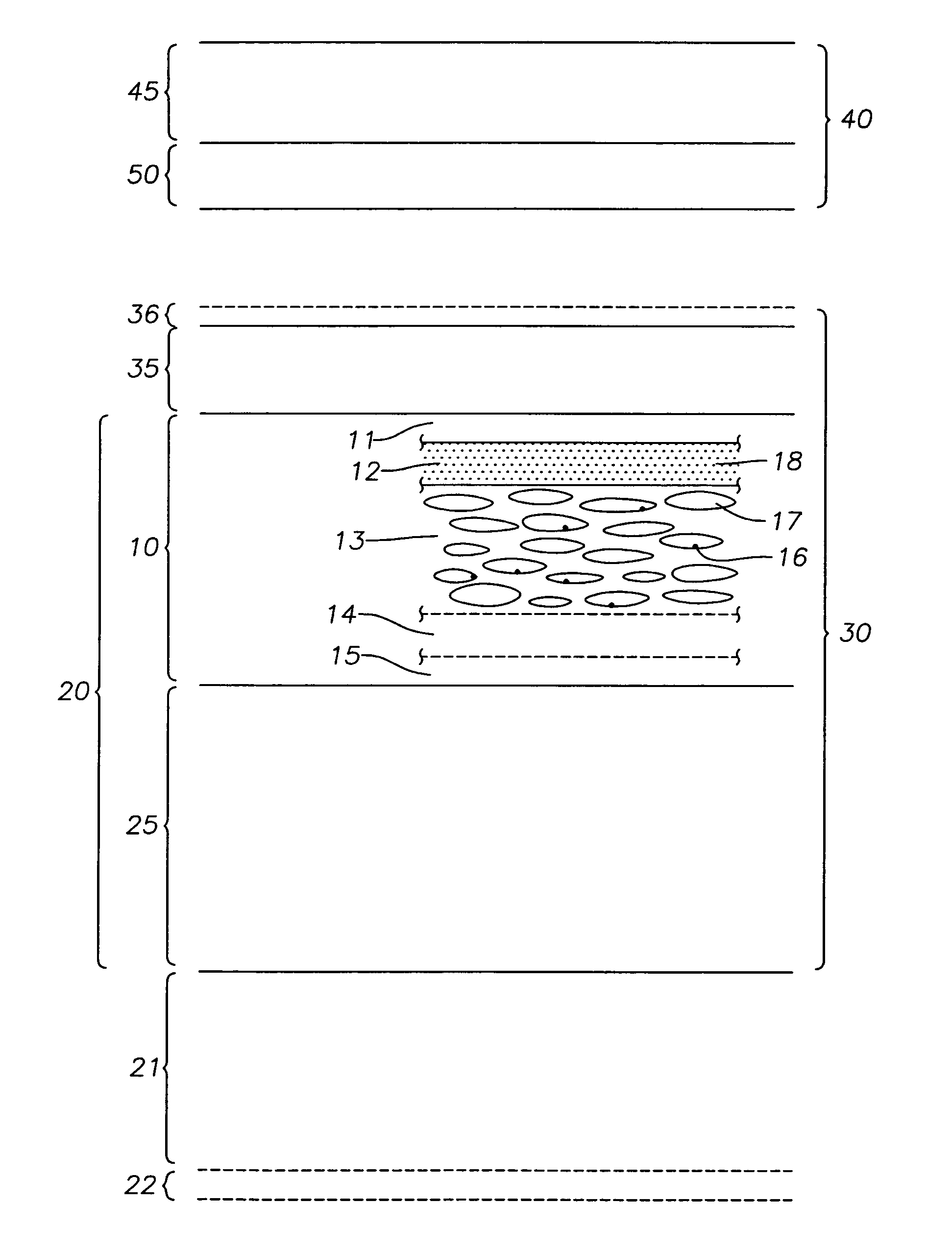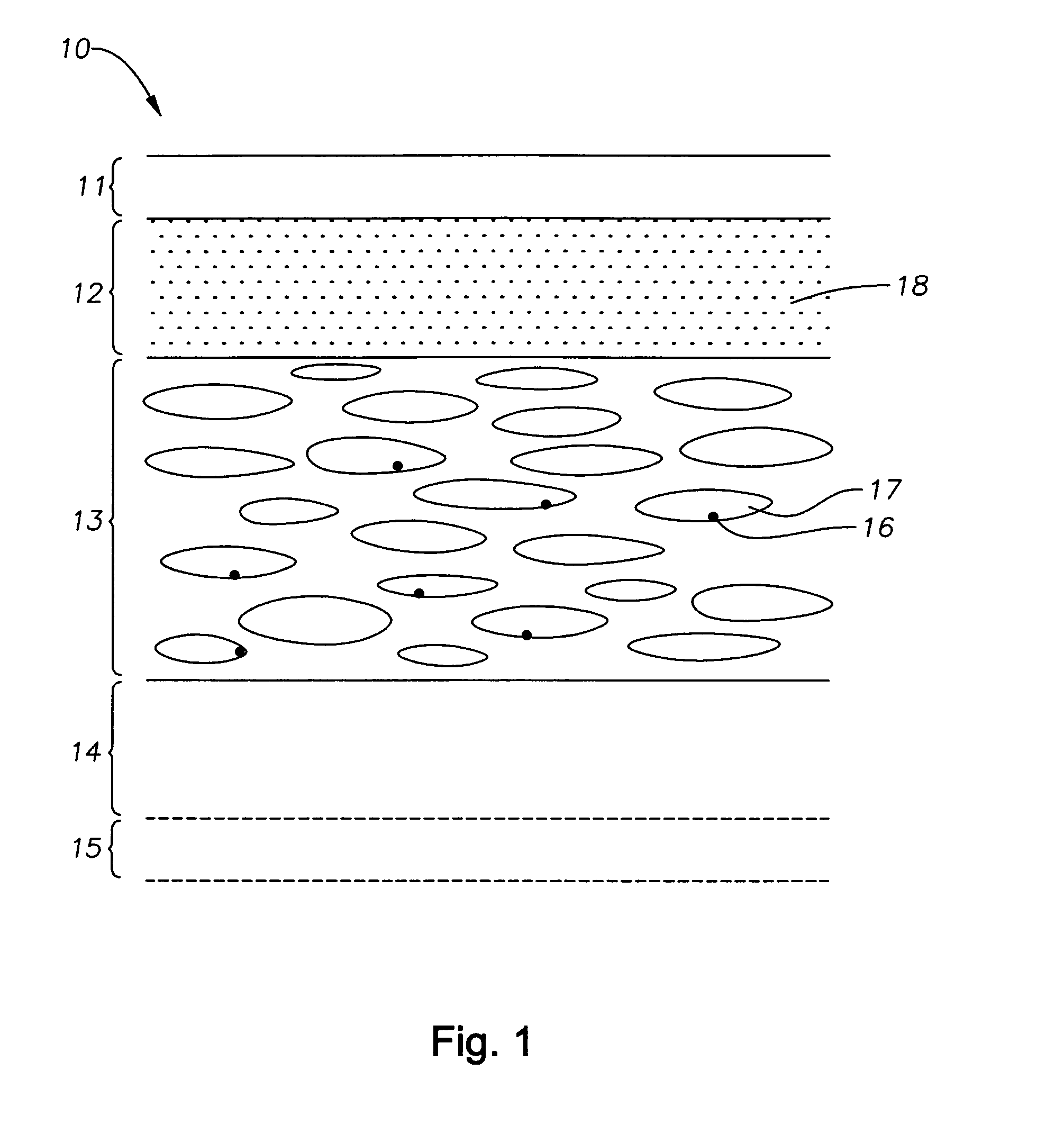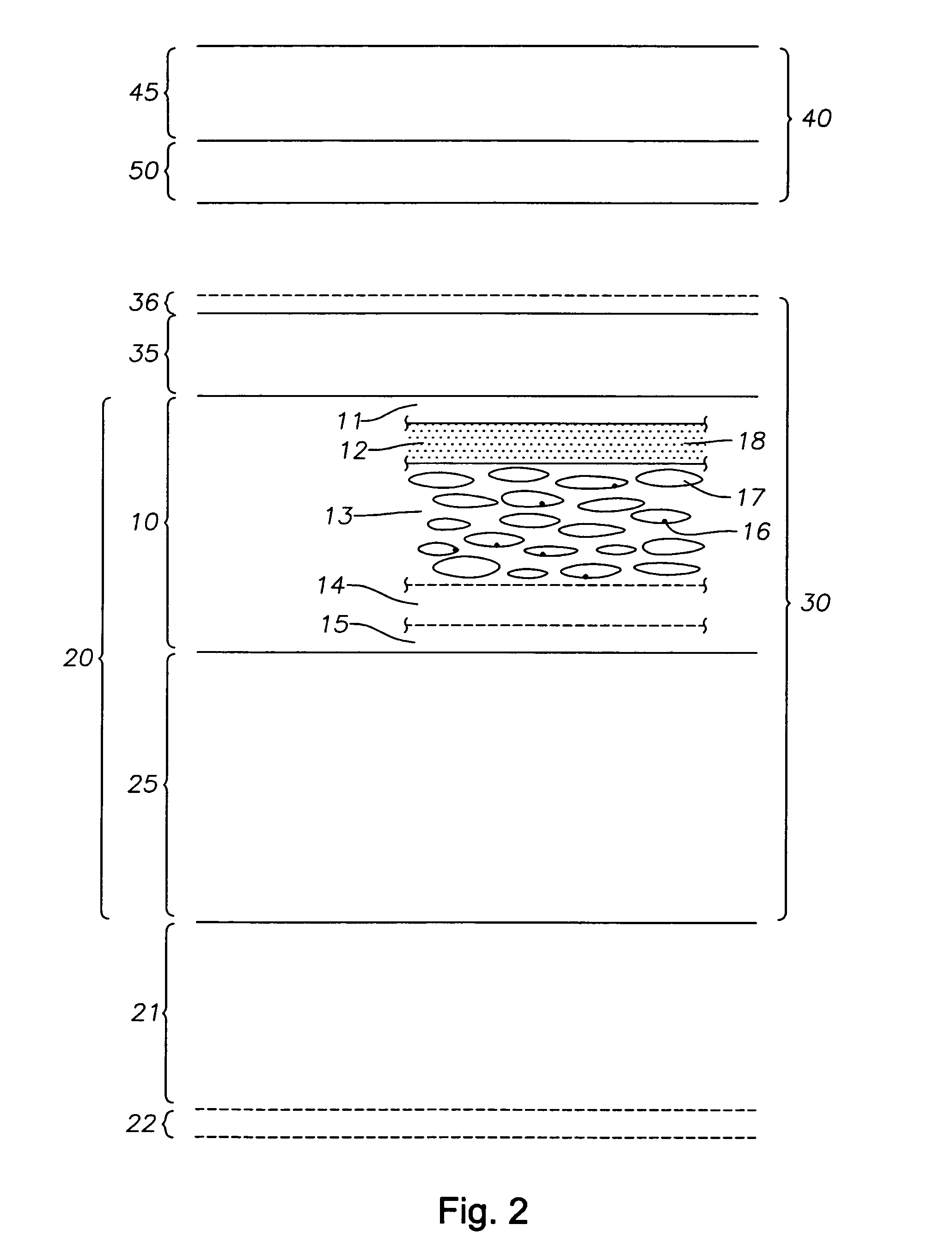Composite film
a technology of composite films and films, applied in the field of composite films, can solve the problems of poor thermal insulation qualities of films, shrinkage, distortion, and sticking to processing equipment, and achieve the effect of improving thermal insulation qualities, improving functionality and aesthetic appearan
- Summary
- Abstract
- Description
- Claims
- Application Information
AI Technical Summary
Benefits of technology
Problems solved by technology
Method used
Image
Examples
example 2
[0087]A five-layer composite film, according to the present invention, was prepared having the following structure and composition:
[0088]
Thickness (mils)TradeOpticalLayerResinWt %namePoly gaugegauge1EPB100JPC0.030.03terpolymerXPM75102polypropylene56.8Total EOD04-28TiO2 / PP43.2Ampacet's0.1250.125masterbatch50 wt %TiO23polypropylene90Total EOD04-28PBT10G.E. Valox0.521.09295(cavitated)4polypropylene90.4Total EOD04-28TiO2 / PP9.6Ampacet's0.1250.125masterbatch50 wt %TiO25EPB100JPC0.030.03terpolymerXPM7510Total Thickness0.831.40
[0089]The outer surface of the fifth layer was corona treated. The composite film was produced at a yield of 35,000 in2 / lb (49.8 m2 / kg), with an overall density of 0.57 g / cm3. The density of the third layer (in this case, the core layer) was 0.45 g / cm3. The composite film also had a whiteness of 87 and a 45° gloss of 47 gloss units as measured for the outer surface of the first layer.
[0090]This example illustrates that a film according to this invention may provide im...
PUM
| Property | Measurement | Unit |
|---|---|---|
| density | aaaaa | aaaaa |
| thickness | aaaaa | aaaaa |
| wt % | aaaaa | aaaaa |
Abstract
Description
Claims
Application Information
 Login to View More
Login to View More - R&D
- Intellectual Property
- Life Sciences
- Materials
- Tech Scout
- Unparalleled Data Quality
- Higher Quality Content
- 60% Fewer Hallucinations
Browse by: Latest US Patents, China's latest patents, Technical Efficacy Thesaurus, Application Domain, Technology Topic, Popular Technical Reports.
© 2025 PatSnap. All rights reserved.Legal|Privacy policy|Modern Slavery Act Transparency Statement|Sitemap|About US| Contact US: help@patsnap.com



